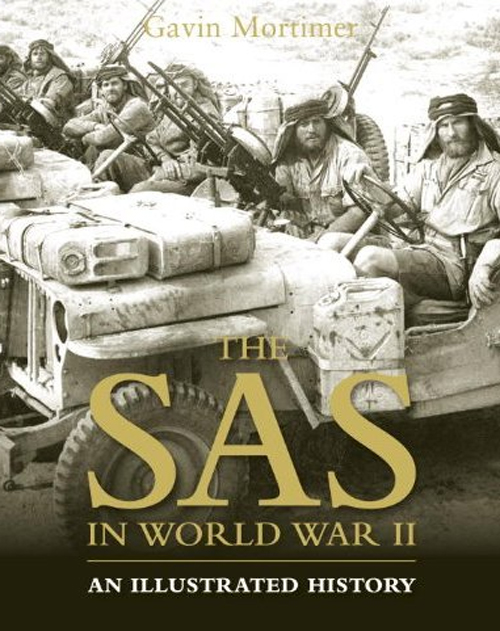The SAS in World War II - An Illustrated History
Review

The SAS in World War II - An Illustrated History, Gavin Mortimer. Osprey Publishing, 2011, 256 pp, ISBN 978-1-84908-646-2, £20.
With so much sensational literature being produced nowadays about Special Forces, it is good to find a book about the history of the Special Air Service (SAS) during World War 2, which is well researched and wonderfully illustrated. It tells the story of these incredibly brave men as they would want it told, often in their own words and accompanied by their own pictures.
As the author of Stirling's Men in 2004, Gavin Mortimer is well qualified to write this companion edition, once again drawing on his interviews with over 60 of the soldiers who fought with the SAS in the 1940s. This illustrated history would benefit from some of the maps that featured in the earlier book but its photographs are outstanding; many of them published for the first time.
The SAS in World War II tells the story of a languid Guards officer, David Stirling, and the 4 officers and 60 men with whom he formed L Detachment in North Africa in 1941. It takes them through early success and failure (often caused by the arrogance of higher Headquarter staff who thought that they knew how best to make use of such specialists) in the Western Desert through to Rommel's euphoria at the capture of Stirling in January 1943. By now much larger and renamed SRS (Special Raiding Squadron), command was taken by one of the original officers, Paddy Mayne, as the fighting moved to Sicily and Italy. Mayne was a former Irish and Lions rugby international, fearsome in war and frightening in drink, who had to overcome "his abhorrence of administration and contempt for staff officers" to lead 1SAS until the end of the war.
The story moves to Northern Europe in 1944-45, by which time there was an SAS Brigade, until disbandment in October 1945. A TA unit was re-formed in 1947 and the regular 22 SAS in 1952, as officialdom finally realised that it needed the special kind of men who make up this elite part of the British Army.

